Does electrical stimulation of muscles help in training?
Categories: Health and Medicine | Healthy lifestyle | Sport
By Pictolic https://pictolic.com/article/does-electrical-stimulation-of-muscles-help-in-training.htmlThanks to the obsessive television advertising of myostimulators "butterfly" and other similar devices, we know that the cherished cubes of the press can be obtained without much difficulty. By simply sticking a device that gives out electrical impulses on our stomach, we become more prominent and sexier, lying on the couch, walking around the city and even absorbing extra calories with sweets. It sounds very tempting, but does it really work?

Do muscles grow from being electrocuted? On the web, you can find a lot of information about this method of training, and the technique is sometimes advertised by quite reputable athletes. It turns out that this rather controversial method of influencing the body has deep historical roots and if it has survived to the present day, it probably makes some sense. Let's try to understand this difficult question.
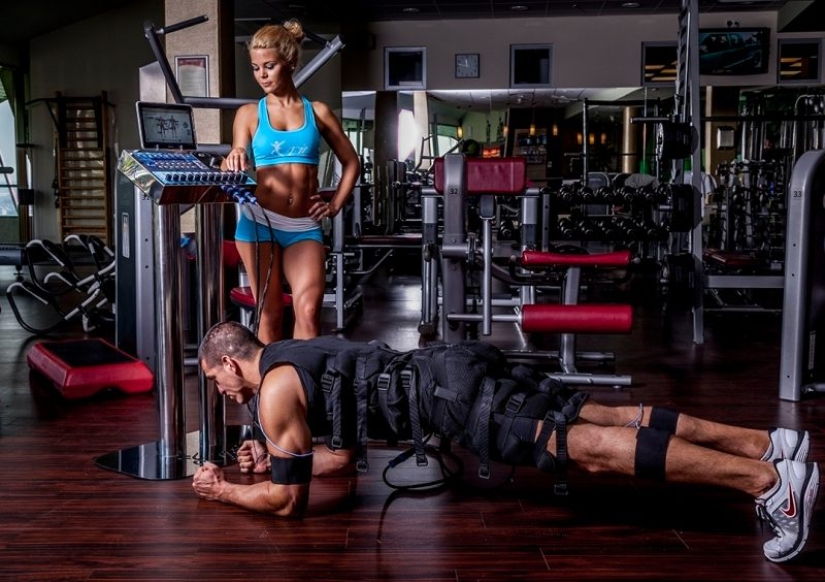
Electricity has been known to mankind since time immemorial. It is no longer possible to find out when this physical phenomenon was consciously used by a person for therapeutic and preventive purposes, but it is known for sure that in ancient Egypt and Rome electric acne was used in physiotherapy to relieve pain in muscles and internal organs.
Despite the primitiveness of ancient science, today it is precisely established that the actions of ancient aesculapians are completely justified. Electrical discharges of small force can cause the body to produce endogenous, that is, its own opioids, as well as serotonin. In addition, current pulses affect the spinal cord, blocking pain signals.
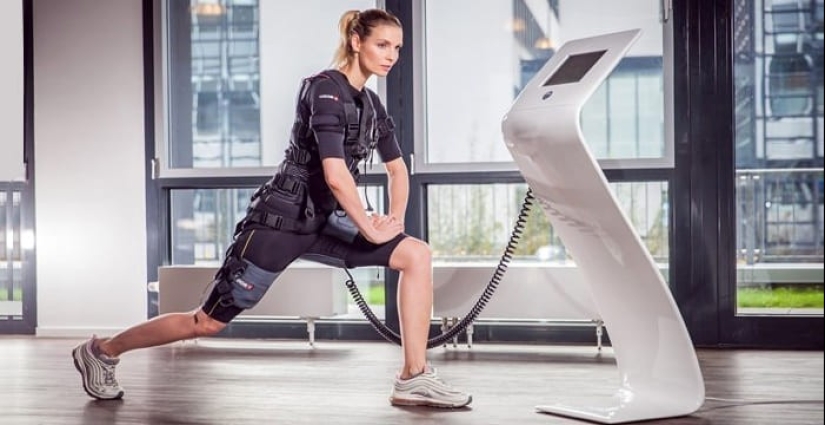
Of course, using current to anesthetize a patient is not a good idea, especially today, when there are many more effective and less dangerous means. But in the fight against muscular dystrophy, electricity is still used today, and very successfully. It is quite possible that this fact has attracted the attention of athletes all over the world. What could be simpler — in the course of training, additionally stimulate your muscles with electrical discharges, enhancing the beneficial effect. What could possibly go wrong here?
Surprisingly, no serious detailed studies have been conducted to study the effects of current on muscles. Small scattered experiments were carried out, which generally confirmed the positive effect, but also found that it was insignificant. In simple words, the current affects muscle growth, but not more than the usual increase in physical activity during exercise.
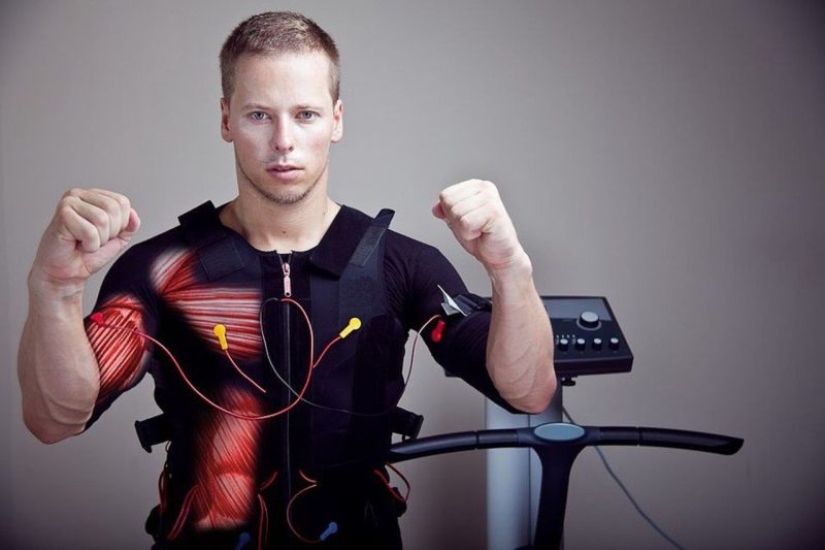
Supporters of electrical stimulation are full of enthusiasm to prove their case — they are sure that muscle contraction under the influence of current at the time of performing a strength exercise helps to overcome heavy loads, and therefore to build muscle mass and strength faster. At the same time, according to adherents of electricity, electric shock helps to pump the most difficult muscles for training, that is, those that we use most often.
Is it true or not? Rachel Feltman, author of the popular Science magazine Popular Science, decided to sacrifice herself for the sake of science and went to the very lair of electric jocks - a gym with a promising name Shock Therapy. Initially, many thought that the reports from the journalist's training sessions were an advertisement for an unusual sports club, but the conclusion that Feltman made after several workouts was not at all in the spirit of the advertising campaign.
Rachel admitted that the effect of stimulation is actually present — the muscles tremble, and there is also a feeling "like when a rubber tourniquet is applied." The weight loss, which was noted by the journalist after a series of classes, is difficult to attribute solely to the action of the current. All those who attend trainings at the Shock Therapy club are dressed in special suits similar to diving suits, thanks to which a person sweats profusely.
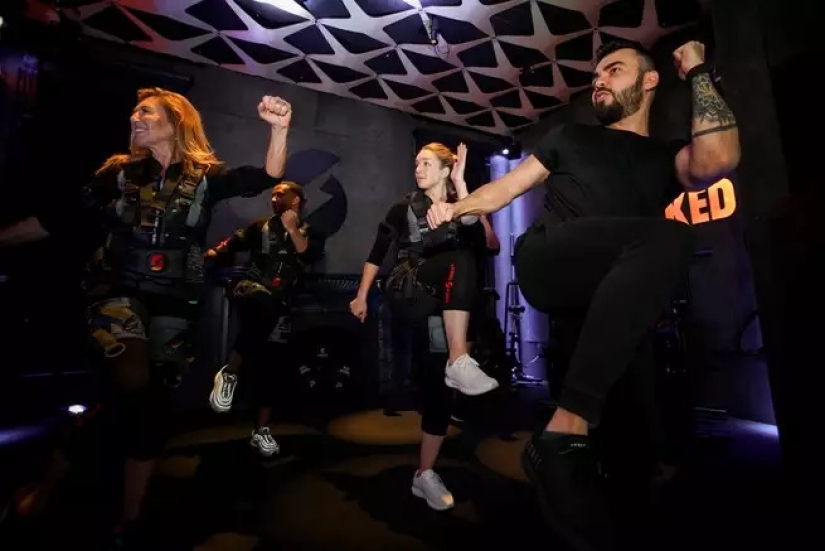
Performing exercises when you are electrocuted is more difficult than in normal mode. We have to fight not only with the weight of the shells, but also with our own rebellious muscles that are trying to live their independent lives. Being an experienced athlete who has been attending fitness clubs for several years, Feltman did not dare to approach the barbell, as she was simply afraid not to hold it.
Rachel decided to limit herself to the simplest, long-proven exercises that are not associated with special risk. The result seemed to be present — the athlete was seriously tired, sweated profusely and in general could not raise her hands by the evening. But at the same time Feltman asked quite a reasonable question — were all these "dances with a shamanic tambourine" necessary, that is, wires, devices, rubberized suits and torture-like exercises?

The woman admits that she doesn't. It was possible to bring yourself "to the handle" with ordinary traditional training, simply by increasing the intensity and weight of the projectiles. At the same time, Rachel was surprised by the prices of the Shock Therapy sports club — they charged the client $ 55 for each lesson. There is quite a reasonable question — if it actually works, then why has electrical stimulation not yet become the most popular type of fitness in the world? Yes, Usain Bolt uses electricity in his workouts, but he can easily afford to pay more than $ 50 per class, just out of curiosity or boredom.
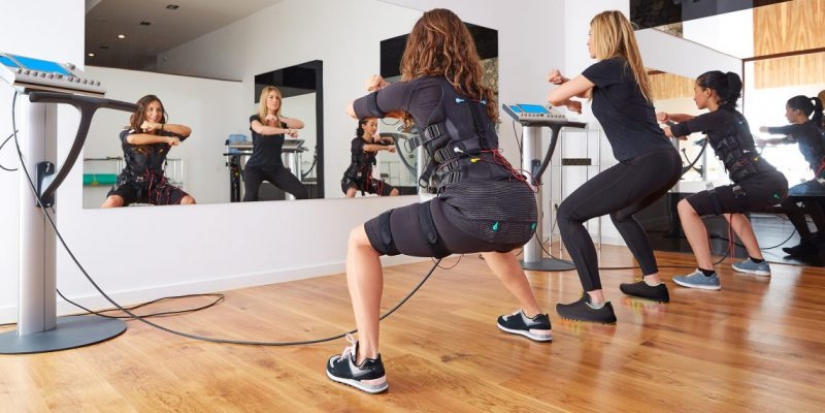
As for the brave journalist who penetrated into the lair of electrical stimulators, the side effects, in the form of muscle spasms, bothered her for several days after the last visit to the unusual gym. To such complaints, Shock Therapy trainers optimistically respond that everything is fine — the muscles continue to "swing themselves" for some time after the end of the workout. Even so, Rachel is not at all happy with such symptoms, as she almost fell several times while walking on roller skates due to unexpected cramps.
Summing up, we can say that the taste and color… Perhaps someone likes such classes, which means it's not so bad. Even if the result is far-fetched, the placebo effect has not been canceled yet. And what do you think — does electrostimulation of muscles work or is this another way for charlatans from sports to cash in on our desire to get everything at once?
Recent articles

Treasures are all associated with pirates, robbers and the affairs of bygone days. You will be surprised, but countless treasures ...

Professional street photographer Eric Kim teaches his craft in workshops around the world. Next, you will find some tips from a ...

An Englishman, a German and a Russian meet... No, this is not the beginning of another joke, but a rough description of a video ...